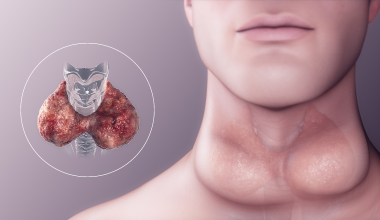Introduction
Chronic pain is a debilitating condition that affects millions of people worldwide, often significantly impacting their quality of life. Traditional pain management approaches, such as medications and therapies, may provide relief but often come with limitations and potential side effects. However, the future of chronic pain management holds promise as science gets closer to the holy grail of more effective and targeted solutions.
In this article, we will explore the future of chronic pain management, highlighting the groundbreaking research and emerging technologies that offer hope for improved pain relief. By delving into the innovative approaches being pursued, we can gain insight into the potential transformation of chronic pain treatment and the prospects of a brighter future for those suffering from persistent pain.
More effective ways to treat chronic pain are on the horizon
- Scientific Advancements : More effective ways to treat chronic pain are on the horizon as scientific advancements continue to push the boundaries of pain management. Researchers are exploring innovative approaches like targeted drug delivery systems, precision medicine, and the use of cutting-edge technologies such as neurostimulation and virtual reality therapy.
- Chronic Pain At The Molecular And Neural Levels : Additionally, advancements in understanding the underlying mechanisms of chronic pain at the molecular and neural levels are paving the way for the development of more targeted and personalized treatment options. As science progresses, these emerging approaches hold the potential to provide greater pain relief, minimize side effects, and improve the overall quality of life for individuals living with chronic pain.
Technological improvements can help us collect more accurate data of pain management
- Revolutionize The Collection Of Accurate Data : Technological improvements have the potential to revolutionize the collection of accurate data in pain management, enabling more precise and individualized treatment approaches. Traditional methods of pain assessment, such as self-reporting scales, can be subjective and limited in capturing the multidimensional nature of pain. However, advancements in wearable devices, mobile health applications, and sensor technologies offer new avenues for data collection.
- Wearable Devices Equipped With Biosensors : Wearable devices equipped with biosensors can monitor physiological indicators such as heart rate, skin conductance, and movement patterns, providing objective measurements of pain intensity and fluctuations. Mobile applications can facilitate real-time data collection, allowing individuals to log their pain experiences, triggers, and responses to treatments. Additionally, electronic health records and data analytics can integrate and analyze vast amounts of pain-related data, identifying patterns and correlations that can inform personalized treatment strategies.
Biofilms may be an underlying cause of some chronic pain conditions
- Biofilms Are Communities Of Microorganisms : Emerging research suggests that biofilms may contribute to the development and persistence of certain chronic pain conditions. Biofilms are communities of microorganisms that adhere to surfaces and form protective structures, making them resistant to antibiotics and the immune system. While biofilms are commonly associated with infections, recent studies indicate their presence in chronic pain conditions such as bacterial prostatitis, chronic wounds, and interstitial cystitis.
- Biofilms Can Trigger Chronic Inflammation : Biofilms can trigger chronic inflammation and release harmful byproducts that sensitize nerve endings, leading to ongoing pain signals. Additionally, the complex structure of biofilms can act as a barrier, preventing effective treatment and perpetuating the pain cycle.
- Understanding The Role Of Biofilms : Understanding the role of biofilms in chronic pain conditions opens up new possibilities for targeted therapies. Strategies aimed at disrupting or eliminating biofilms, such as biofilm-targeting agents or novel antimicrobial approaches, may help alleviate pain and improve treatment outcomes.
Gene expression is a possible source of treatment for some types of chronic pain
Gene expression holds promise as a potential source of treatment for certain types of chronic pain. Gene expression refers to the activation or inhibition of specific genes, leading to the production of proteins that play a role in pain signaling and processing. By targeting and modulating gene expression, it may be possible to alter the way pain signals are transmitted and perceived in the body. This approach can potentially lead to the development of novel therapies that provide more effective and personalized pain relief. However, further research is necessary to fully understand the complex mechanisms of gene expression in chronic pain and to develop safe and targeted interventions based on these findings.
Also Read: The Power of Resistant Starch: Why it’s a Must-Have Carb for Gut Health
Conclusion
The future of chronic pain management holds promise as scientific advancements bring us closer to the holy grail of more effective and personalized treatments. Through innovative research and technological developments, scientists are gaining a deeper understanding of the mechanisms underlying chronic pain and exploring new therapeutic avenues. Advancements in neuroimaging, neuromodulation techniques, precision medicine, wearable devices, and gene expression studies are paving the way for more targeted and individualized approaches to pain management








